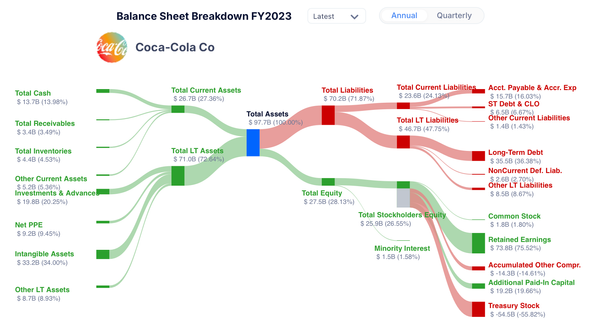ESG investing: The weight of governance in a sustainable future

Environmental, Social, and Governance (ESG) investing is reshaping finance, letting investors align their portfolios with principles they believe in. But while all three pillars matter, governance (G) takes center stage for me. Let’s dive into each aspect and why governance deserves a starring role.
Understanding ESG: The three pillars
Environmental (E)
The Environmental part gauges a company’s impact on the planet, spotlighting areas like:
- Carbon emissions: Emissions and reduction strategies set companies apart.
- Resource management: Sustainable use of resources, like water, is crucial.
- Eco-conscious practices: Think waste reduction, renewables, and sustainable sourcing.
Environmental issues are key, but without strong governance, green goals risk becoming just talk. Effective governance ensures sustainability efforts are accountable and transparent. That’s why, while I value environmental progress, I focus on governance as the mechanism making it happen.
Social (S)
Social factors assess a company’s relations with employees, customers, and communities. This includes:
- Labor practices: Diversity, fair treatment, and labor law adherence.
- Community ties: Engagement, local employment, and charity efforts.
- Customer care: Ethical marketing and satisfaction.
Social policies build trust and culture, but again, governance anchors them. Good governance makes sure social promises are more than PR, holding companies to their commitments. That’s why I view governance as the backbone of real social responsibility.
Governance (G)
Governance is the glue holding ESG together, framing how companies operate. It includes:
- Board structure: Diverse, independent boards for solid oversight.
- Executive pay: Transparent, fair pay that aligns with shareholder goals.
- Shareholder rights: Empowered shareholders hold companies accountable.
- Compliance: Staying within the rules to earn market trust.
I prioritize governance because it guides how companies actually deliver on environmental and social promises. Strong governance keeps companies proactive and accountable, ensuring long-term responsibility.
Evaluating companies through governance metrics
Governance metrics offer investors insight into a company’s ESG credibility. These factors include:
- Board diversity: Diverse boards support innovative, balanced decisions.
- Executive compensation: Aligning pay with shareholder interests fosters accountability.
- Shareholder rights: Empowering shareholders strengthens company culture.
Frameworks like the Sustainability Accounting Standards Board (SASB) and the Global Reporting Initiative (GRI) help standardize ESG reporting, making it easier for investors to gauge a company’s commitment to sustainable governance.
Benefits of ESG investing
ESG investing’s perks go beyond profits. Companies with robust governance often have smoother rides during tough times, thanks to stronger risk management. This approach not only supports corporate resilience but also pushes ethical and transparent behavior, leading to a win-win for investors and society.
Challenges and criticisms
Still, ESG isn’t without hurdles. Some think ESG means trading returns for values, but research shows well-governed companies often outperform. Yet, the absence of consistent reporting can be a sticking point, making ESG analysis a bit trickier for investors.

Greenwashing
One big challenge in ESG investing is greenwashing—when companies paint a rosier-than-real picture of their eco-efforts. Think exaggerated sustainability claims or surface-level actions that don’t make a real impact. Greenwashing makes it tough for investors to tell which companies are truly committed and which are just looking for an ESG-friendly spotlight. This issue underscores the importance of digging deep, using reliable data, and doing solid due diligence to separate the genuinely green from the green-in-name-only.
The Tech-Heavy Twist of 2023
At the start of 2023, sustainable fund managers weren’t exactly bursting with optimism. Last year, the Ukraine war drove energy stocks up while tech stocks—many of which dominate ESG funds—stumbled. Predictions for the year were modest. Yet, as November rolled around, ESG funds surprised everyone by outperforming the broader MSCI World index, with returns of 20.3% versus 18.6%.
But here’s the plot twist: this outperformance wasn’t solely because of stellar environmental or social impact initiatives. ESG funds had one key ingredient to thank—the “Magnificent Seven” tech giants: Apple, Microsoft, Alphabet, Amazon, Nvidia, Meta, and Tesla. Take Nvidia, for example, which saw a jaw-dropping 240% rise thanks to the AI boom. In fact, without these tech juggernauts, ESG fund performance would have been a whole lot less magnificent, with the broader S&P 500 up 20% but the S&P 493 (minus the Seven) only gaining 8%.
This dependence on the big tech players raises a big question: are these tech stocks really champions of ESG values, or are they just lucrative additions with a convenient ESG label? Governance, again, becomes the lens we use to evaluate these companies. Nvidia, for instance, might be a hit in AI, but AI’s environmental toll and ethical implications are under scrutiny. So, while tech giants push ESG funds to new heights, investors may need to ask: how sustainable is our “sustainable” investing?
How to get started with ESG investing
If you’re ready to bring ESG into your portfolio, here’s a roadmap to get started:
- Define Your Values: Pinpoint the issues that matter most to you, whether it’s environmental sustainability, social justice, or strong governance. Knowing your priorities will guide your ESG choices.
- Research ESG Funds: Look into funds that actively follow ESG principles. Resources like Morningstar offer insights into sustainable investment options to help you find a good fit.
- Use ESG Ratings: Tap into ESG rating services like MSCI or Sustainalytics to assess companies’ ESG metrics. Keep an eye on governance scores, as they often indicate a company’s commitment to real, lasting change.
- Engage with Companies: Don’t be shy about reaching out to companies. Ask about their ESG initiatives—direct engagement can provide valuable insight into their true sustainability and governance efforts.
- Diversify Your Portfolio: Consider a mix of ESG-focused stocks, green bonds, and sustainable ETFs. A diversified approach can help balance risk while keeping your investments aligned with your values.





